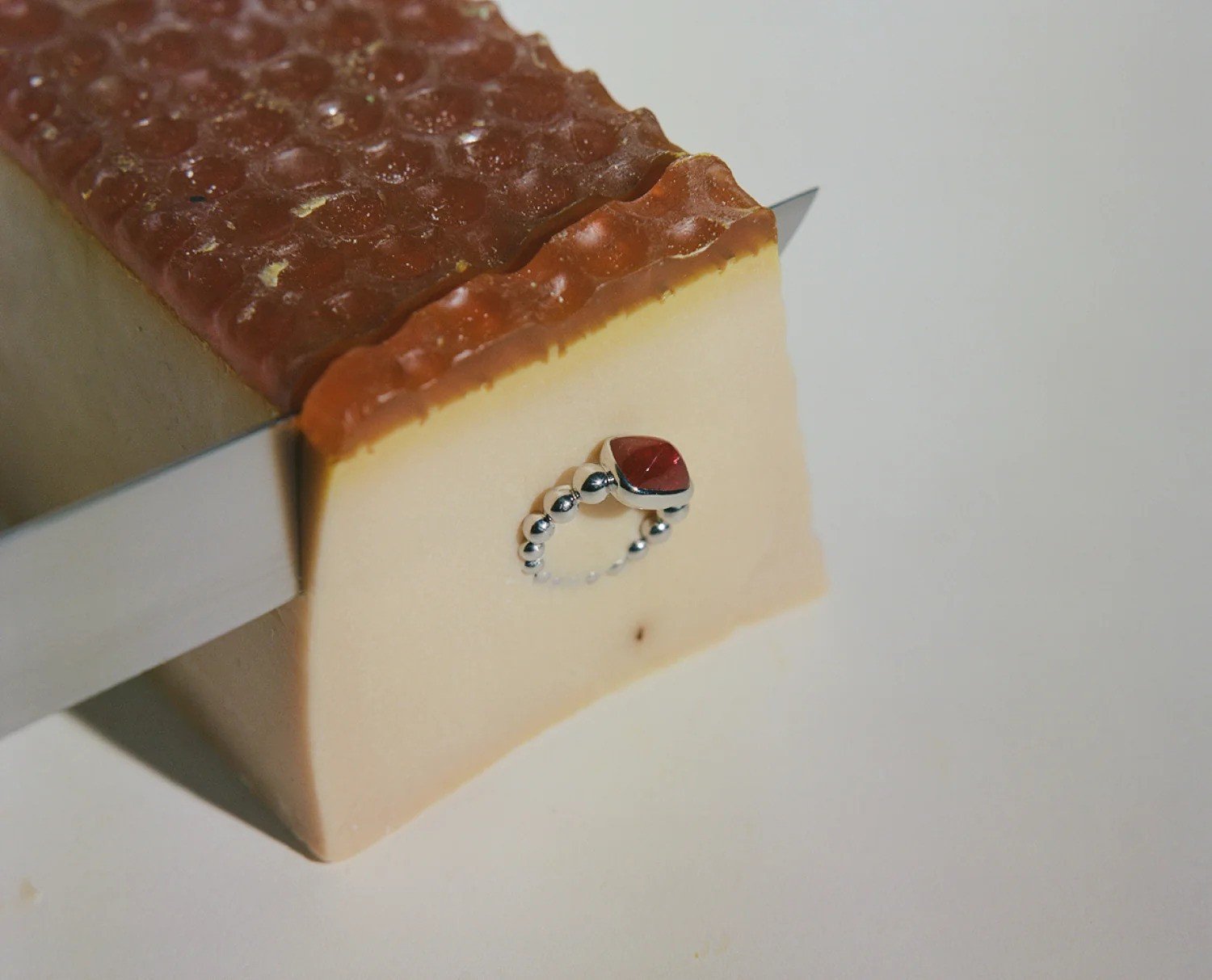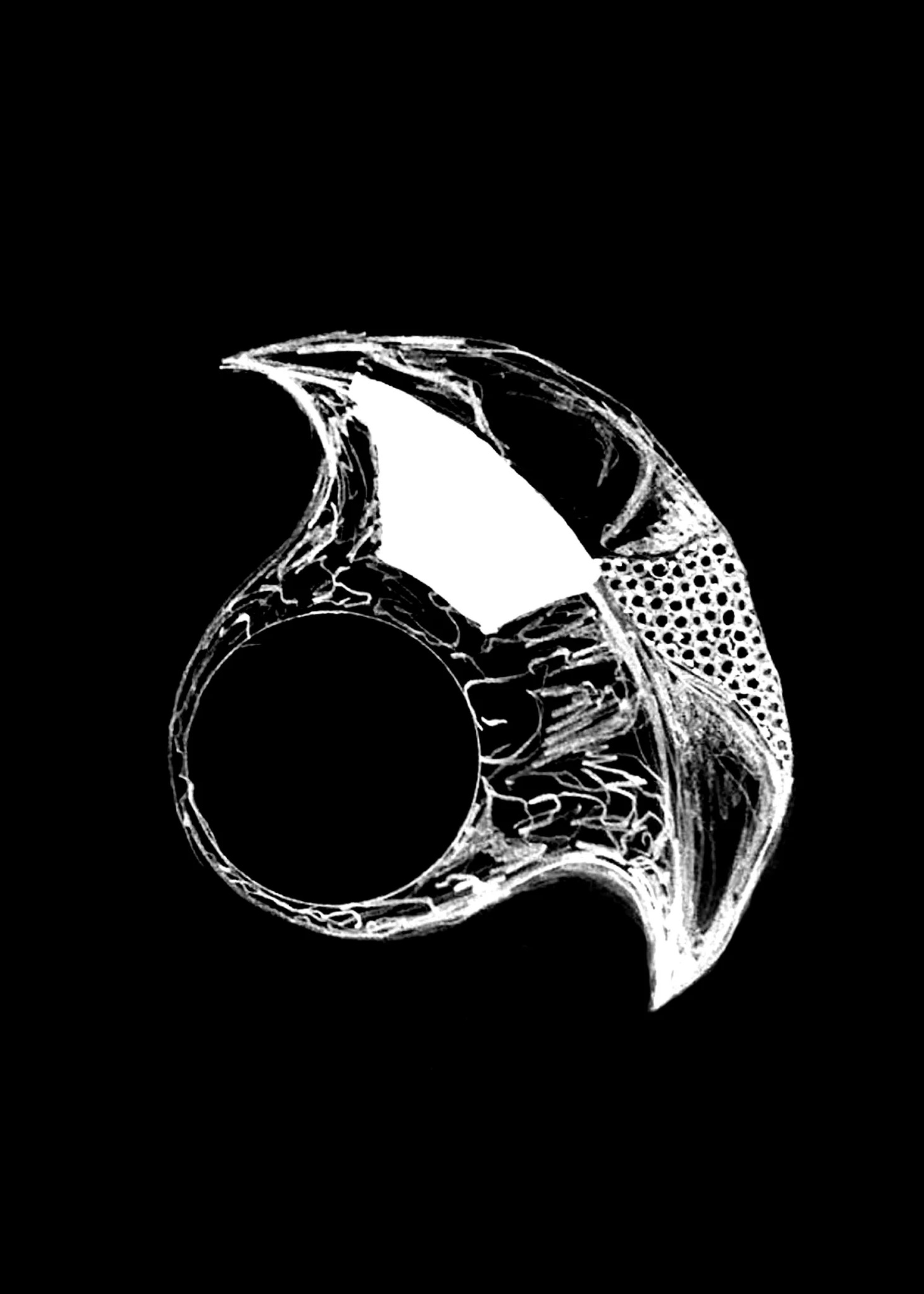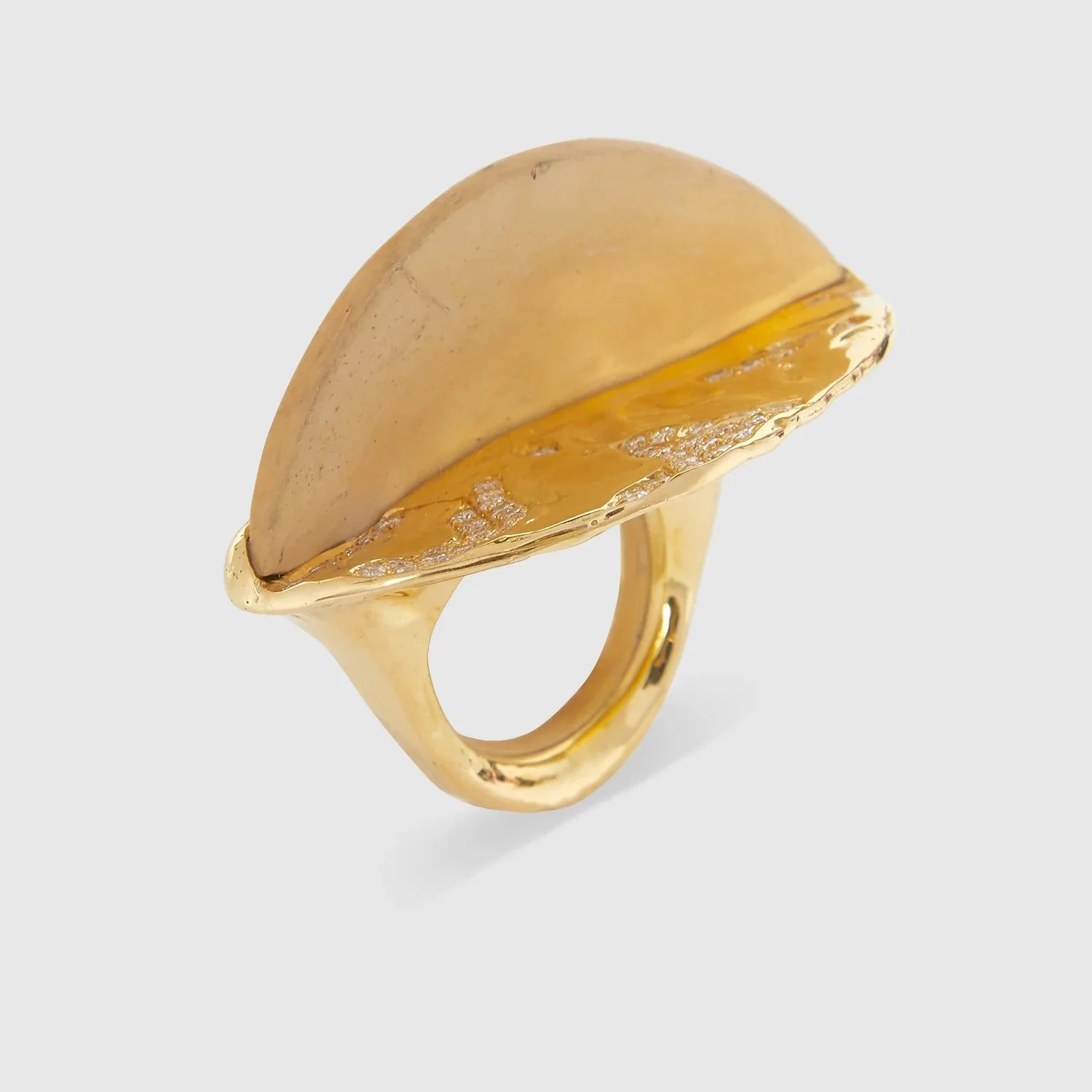Patcharavipa
Contemporary Thai heirloom jewellery
Patcharavipa is a fine jewellery brand dedicated to preserving the Thai craft of jewellery-making. It was established in 2016 by London-based jewellery designer Patcharavipa Bodiratnangkura in her hometown of Bangkok. The brand’s range of accessories is a nod to her Thai heritage and serves as contemporary heirloom pieces to be passed down to the next generation.
Patcharavipa, Spring/Summer 22 ‘Lignes d’Été’ collection. Photo by Marton Perlaki. Image courtesy of Patcharavipa.
The brand displays the designer’s fascination with textures and silhouettes. Bodiratnangkura credits the work of artist and sculptor Richard Serra as one of the brand’s main influences. “Patcharavipa’s designs are tactile and bold. I create pieces that present unique silhouettes on the body, and can be transitioned from day to evening,” she explains. Her work is also rooted in the Japanese teachings of wabi-sabi, a view centred on the acceptance of transience and imperfection. This is reflected in the jewellery’s raw and organic shapes.
“Patcharavipa’s designs are tactile and bold. I create pieces that present unique silhouettes on the body, and can be transitioned from day to evening.”
Patcharavipa, Spring/Summer 23 ‘Studios’ collection. Photo by Marton Perlaki. Image courtesy of Patcharavipa.
Bodiratnangkura started crafting jewellery at the age of thirteen, which led her to pursue a BA (Hons) in Jewellery Design at Central Saint Martins. After graduating in 2014, she continued to hone her expertise in gemology by completing the Graduate Diamonds Programme at the Gemology Institute of America and the Colour Stones Programme at the Asian Institute of Gemological Sciences in Bangkok. She returned to Bangkok in 2016 to assemble her team of goldsmiths and establish her namesake brand. In the same year, Patcharavipa debuted in Paris with its first collection, ‘Coexistence’, which drew inspiration from Thailand’s landscapes the designer had visited during her childhood.
Patcharavipa, Men 2021 collection. Photo by Dham Srifuengfung. Image courtesy of Patcharavipa.
Patcharavipa, Men 2021 collection. Photo by Dham Srifuengfung. Image courtesy of Patcharavipa.
Patcharavipa is known for its use of locally-sourced natural materials such as coconut shells, ebony wood, and Thai gold. ”Using natural materials also makes each piece different, so everyone can own a piece that is uniquely theirs,” Bodiratnangkura comments. “With the brand, I also wanted to explore materials that are typically used to make wearable items.”
In ‘Coexistence’, Bodiratnangkura used recycled coconut shells grown in Amphawa and crafted them into rings. “The shells came from a special type of coconut we use in Thailand to create violins. I was initially drawn to its feminine shape and form," she elaborates. Aside from coconut shells, she made use of Burmese ebony wood, known as a spiritual symbol in Southeast Asian culture. These natural resources were then coated with a mix of 18-karat gold and an alloy, which the designer dubbed as Siam gold. Sourced and processed in Thailand, Siam gold is the main material used in all of Patcharavipa's jewellery pieces.
Patcharavipa, Couture 2022 collection. Photo by Dham Srifuengfung. Image courtesy of Patcharavipa.
Patcharavipa, Men 2021 collection. Photo by Dham Srifuengfung. Image courtesy of Patcharavipa.
Bodiratnangkura produces one main annual collection and a couture line featuring larger gemstones. She spends around two months designing, and it takes a similar amount of time for the production process. While some other jewellery houses cultivate the stone selections first before creating the design, Patcharavipa does the opposite. Bodiratnangkura draws out the design prior to sourcing the stones, which depends on the concept and the gold or metal she is working with for the collection. Aside from their jewellery collections, the brand introduced its line of customised vintage luxury watches in 2021. The designer reworks them by adding engraved embellishments handcrafted using the traditional lost wax technique.
Patcharavipa’s workshop in Bangkok. Image courtesy of Patcharavipa.
A sketch from the ‘Coexistence’ collection. Image courtesy of Patcharavipa.
A Thai jewellery artisan working at Patcharavipa’s workshop. Image courtesy of Patcharavipa.
The brand also works with local artisans to highlight traditional Thai craftsmanship. The workshop employs seven craftspeople who each specialise in different areas of jewellery-making, including goldsmithing, plating, polishing, engraving, and stone setting. Describing the production process, Bodiratnangkura says, “I start by drawing the designs inside my head before sketching them by hand. Thereafter, I pass them to the team in the atelier.” According to her, communicating her designs with the artisans is one of the main challenges in the process. “Explaining the concept and design to goldsmiths is quite complicated,” she remarks. “They need to completely understand the design to carry out the proper technical process."
Spring/Summer 2021 ‘Clues Sepper’ collection campaign. Photo by Esther Theaker. Image of Patcharavipa.
Bodiratnangkura’s designs are influenced by a wealth of references—from art, nature, architecture, and the human body form. She examines the work of various art practitioners, and interprets them into collections: photographer Nobuyoshi Araki in ‘Twisted’ (2019), architect Jean Prouvé in ‘Clues Sepper’ (2020), and artists Fernand Léger and Jean Dubuffet in ‘Lignes d’Été’ (2021). Correspondingly, the ‘Studio’ collection released last year was influenced by the Cubism art movement.
Coconut Coexist Ring from ‘Coexistence’ (2016). Image courtesy of Patcharavipa.
Spinel Polki Lip Ring from ‘Tushrooms’ (2017). Image courtesy of Patcharavipa.
Crescent 1 Hoop Earrings from ‘Gingkometricts’ (2018). Image courtesy of Patcharavipa.
Elements of nature are also present in Patcharavipa’s collections. This can be seen in ‘Tushrooms’ (2017), which features jewellery with bulbous silhouettes of tulips and mushrooms, together with minuscule diamond embellishments that resemble flower spores. The recurring theme is further explored in ‘Gingkometrics’ (2018), where the linear patterns of gingko leaves are hand-embedded onto rings, bracelets, and earrings with symmetric hexagonal shapes. All the interpreted elements in the pieces were derived from Bodiratnangkura’s observations during her travels overseas.
Bodiratnangkura uses her jewellery-making practice as a way to reconnect with her Thai roots. She perceives the act of passing down jewellery as parallel to sharing traditions of the past. “To me, jewellery is a sentimental piece that reflects longevity and heirloom quality,” says Bodiratnangkura. “Unlike other items such as clothes and shoes, jewellery is something that you can bequeath to the next generation. There is a value that will last." Thus, with Patcharavipa, the designer sets out to bridge the past, present, and future in the form of contemporary heirloom jewellery.
“To me, jewellery is a sentimental piece that reflects longevity and heirloom quality. Unlike other items such as clothes and shoes, jewellery is something that you can bequeath to the next generation. There is a value that will last.”
See more of Patcharavipa’s collection on their website, and their Instagram at @patcharavipa.













